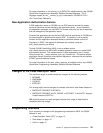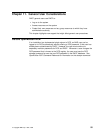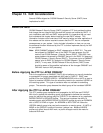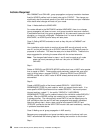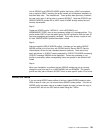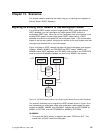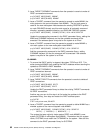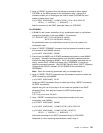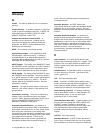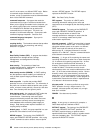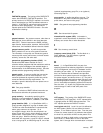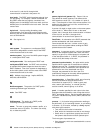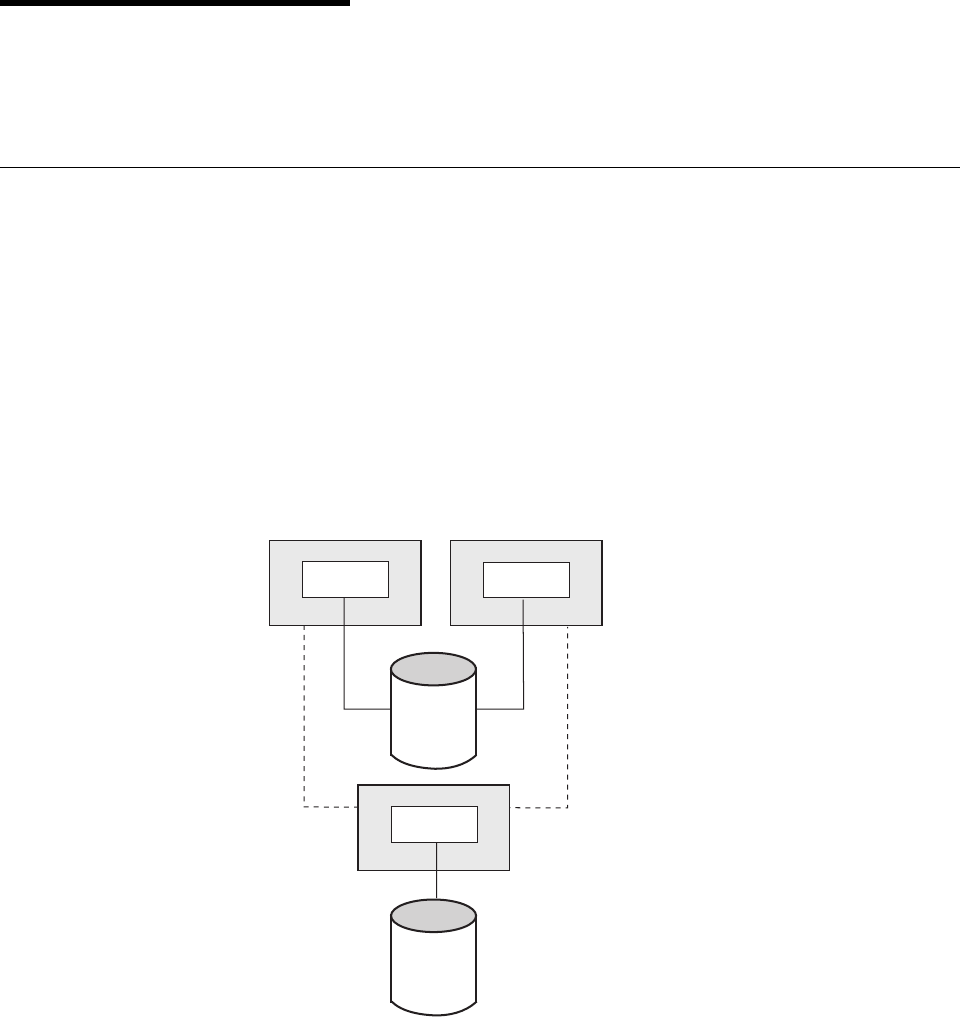
Chapter 13. Scenarios
This chapter contains scenarios that might help you in planning your migration to
Security Server (RACF) Release 2.
Migrating an Existing RRSF Network to Use Multisystem Nodes
If an existing RRSF network contains single-system RRSF nodes that share a
RACF database, you can reconfigure the single-system RRSF nodes to a
multisystem RRSF node. When you do this, the system that is the receiver in the
existing RRSF network for the single-system RRSF nodes sharing a RACF
database must be the main system for the multisystem node. If you want another
system to be the main system, configure the receiver as the main system and then
reconfigure the network with a new main system.
Figure 24 shows an RRSF network that does not have multisystem node support
installed. MIAMI1, MIAMI2, and ORLANDO are RRSF nodes. MIAMI1 and
MIAMI2 share a RACF database, and ORLANDO uses profiles in the RRSFDATA
class to ensure that database updates are sent to only MIAMI1, the receiver.
RACF
database
RACF
database
MIAMI1
MIAMI2
ORLANDO
node
MIAMI1
node
MIAMI2
node
ORLANDO
Figure 24. An RRSF Network Where Two Single System Nodes Share a RACF Database
This scenario illustrates how to migrate the RRSF network shown in Figure 24 to
one implementing a multisystem node, after multisystem node support has been
installed on MIAMI1, MIAMI2, and ORLANDO. Assume that the CVTSNAME for
MIAMI1 is SYSTEM1, and the CVTSNAME for MIAMI2 is SYSTEM2.
On MIAMI1:
1. To ensure that RACF activity is stopped, take down TSO/E and JES. This
should drain all RACF work from the system.
Copyright IBM Corp. 1994, 1996 61



